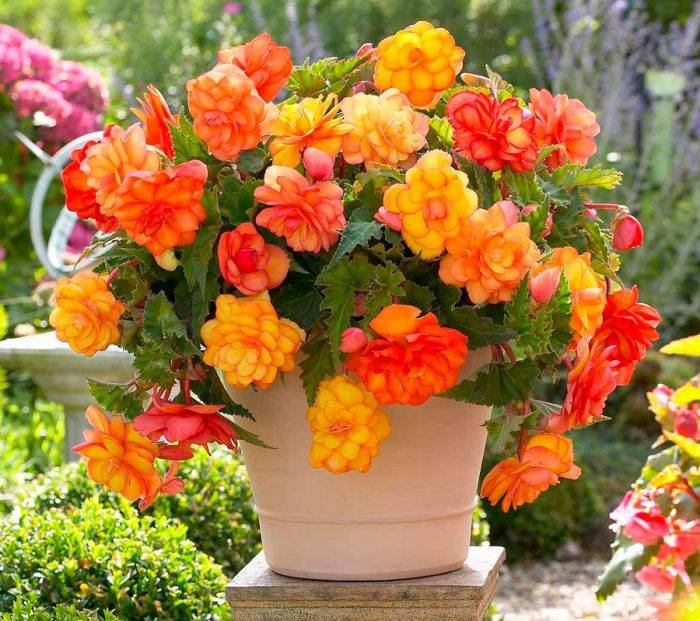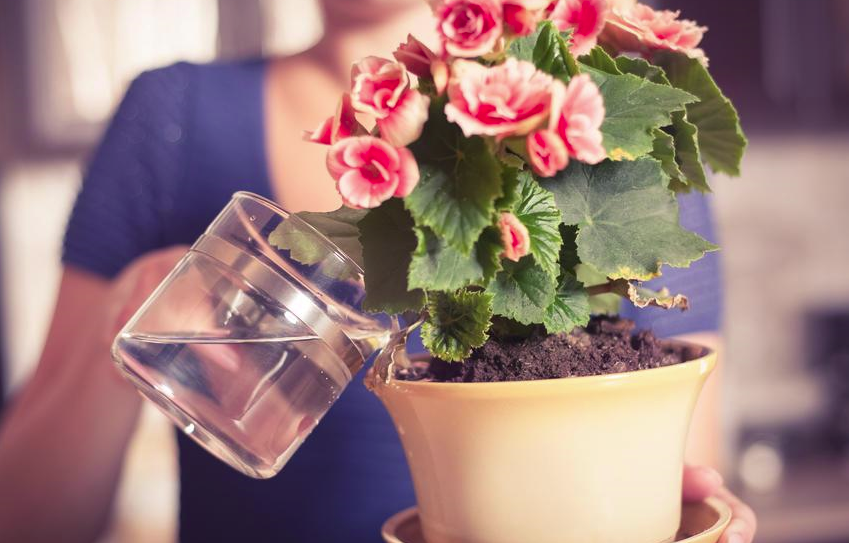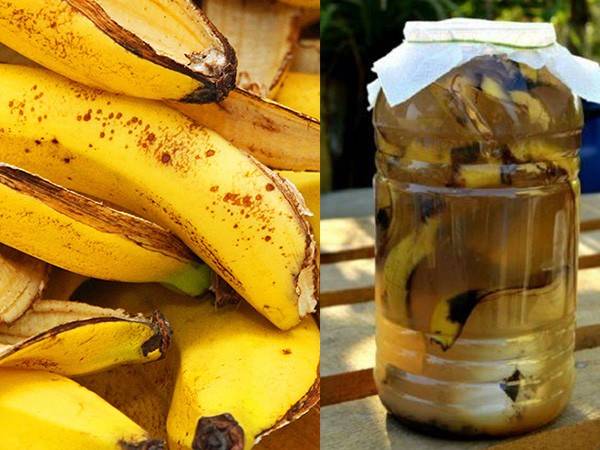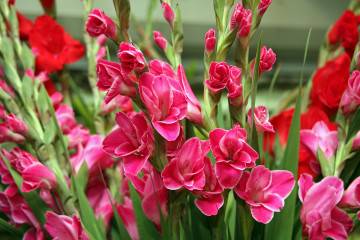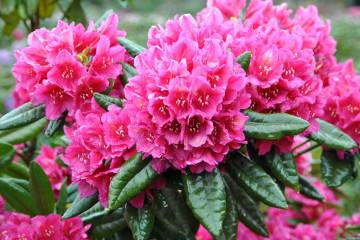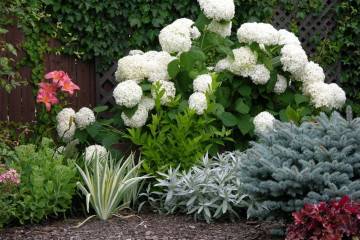How to feed begonia - types of fertilizers, application
Content:
Begonia is the most common decorative leafy and flowering plant. The flower grows well both indoors and outdoors. It can be used in living room interiors and landscaping for garden landscaping. When growing begonias, it is important to understand what fertilizers and in what quantity should be used in the care, this will help to achieve good growth and lush flowering.
Required items
The active period of begonia growth is early March-late October. It is at this time that the plant needs enhanced nutrition. The first feeding should be done when spring comes and the growing season begins. It is better to use ammonium nitrate or urea as a fertilizer.
Flowering varieties require balanced mineral complexes directly for flowering indoor plants. Fertilizers must contain:
- potassium;
- magnesium;
- boron;
- manganese
- zinc;
- phosphorus;
- calcium;
- iron.
For deciduous varieties, in order to increase the green mass, it is better to apply nitrogen and mineral fertilizing alternately throughout the growing season.
The yellowing of the edges of the leaves and the death of flowers indicate that the plant needs potassium. If the flower grows very slowly and almost imperceptibly, then it is necessary to increase the dose of phosphorus. Low resistance to various diseases indicates a lack of calcium. The reason for the blanching of the leaves is the low iron content in the soil.
General rules for fertilization
Begonia should be fed, adhering to certain rules.
- The frequency of fertilization is once every 1.5-2 weeks.
- It is better to apply fertilizer in the evening.
- 2-3 hours before applying top dressing, you need to moisten the soil well with settled or filtered water.
- Perform only root feeding, trying not to get on the leaves and flowers. Otherwise, they will turn yellow and dry out.
- It is important to remember the measure. An excess of any fertilizer can provoke toxicosis and death of the plant.
Fertilizers and feeding for growth
How to fertilize begonia for good growth and development? The flower can be fed with the concentrated organic-mineral fertilizer Bona Forte. It is not difficult to apply it. For 1.5 liters of water, 10 ml of solution will be required. You can also use Begonias fertilizers such as Good Power, Biopon, Fertika Lux and Mr. Color. All these complexes contain a perfectly balanced composition of nutrients, which will provide the plant with active growth and development.
How to feed deciduous begonia? Better to use nitrogen fertilizers such as "Bona Forte for violets and begonias" and azovite. Feeding begonia with such fertilizers, you can achieve active growth of greenery.
What and how often to feed for flowering
Feeding begonias for abundant flowering involves the use of complexes containing a large amount of potassium and phosphorus. Phosphorus will help form the correct budding of flower buds, provide lush and long flowering. Potassium is responsible for vigorous growth and good development of the plant. The frequency of top dressing is once every two weeks.
What is the best way to feed begonias for abundant flowering? The flower can also be treated with a boric acid solution. This remedy must be applied before the first buds appear and throughout the flowering period. The frequency of feeding is once every two weeks. Thanks to this, the begonias will form much more buds, they will be very bright, and the duration of flowering will increase.
To prepare the solution, take 10 g of boric acid, dilute in a bucket of water and water the plant.
Fertilization errors and their consequences
When feeding begonias, you should carefully consider this, so as not to make annoying mistakes.
- When feeding begonia, it is important not to overdo it, as it will react badly to excess fertilizer. It is better to add less than more, otherwise the plant will get sick and die.
- Begonia should not be forced to re-bloom. When the flowering period is over, it is necessary to stop fertilizing and allow the plant to prepare for the dormant period.
- If the flower is just planted or transplanted, it is impossible to apply top dressing for a month, since the development of the root system may slow down in a seedling that has not had time to get stronger.
- Begonia affected by the disease is fed carefully, starting with not very large doses. During the fight against the disease, the roots, stem and leaves of the plant are too weak, and it can perceive nutrients as a destructive component.
- When applying fertilizers, it is important to ensure that they do not fall on the leaves and flowers, as this can lead to their burns.
Folk fertilization methods
Homemade fertilizers for begonia are considered to be no less effective than industrial mineral complexes or organic matter.
How to feed begonia from such funds? For the preparation of fertilizers at home, the following products are most often used.
Yeast
Take 1 g of dry yeast and 1 teaspoon of sugar, diluted in 1 liter of warm water. The mixture is left to infuse for about 3 hours. Then the required amount of the solution is diluted with pure water in a ratio of 1: 5. Used for watering no more than once every two months.
Sugar
To prepare a sweet solution, add 1 tbsp to 1 liter of water. spoon of sugar, stir well and water the flower no more than once a month.
Tea brewing
The sleeping tea leaves are dried, connected to the ground in a ratio of 1: 3 and used when planting begonias.
Orange, tangerine or lemon peel
Dry crusts are poured into a liter jar (3/4), poured with boiling water and infused for 5 hours. Then the infusion is diluted with water in a ratio of 1: 5 and used to feed the plant. The frequency of introduction is once a month.
Chicken egg shell
The eggshells are ground into powder and poured with water (40 ° C). The components are taken in a 1: 5 ratio. The mixture is allowed to brew for 1.5-2 weeks, while it is important to shake it every three days. Watering begonias is carried out no more than once a month.
Banana peel
The banana peel must be dried and chopped. Add the resulting powder to a flower pot, then water the earth abundantly.The frequency of such a procedure is once every 30 days.
Wood ash
Take 1 liter of warm water, add 3 tbsp. tablespoons of wood ash, stir well and leave for 7-8 days. After the solution is infused, it is used to water the begonias twice a month.
For good growth, proper development and abundant flowering, the plant needs to be given increased attention. In order for the beautiful begonia to be in perfect condition and decorate the house, she needs to ensure timely watering and proper feeding.
